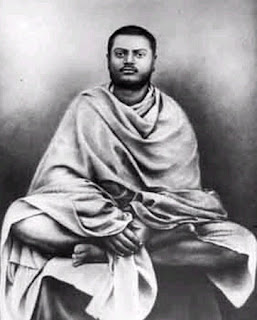Journey or Progress 3
Materialists and scientists may argue – what is pure consciousness? Can anybody define the same? Since it is not definable and not discernible through senses, it therefore does not exist. So pure existence is a Utopia as which exists can be realized by senses. If we cannot realize it how can we say that it exists? The response to the same as given by those who have undertaken the journey and have realized the same is – we can neither define, nor realize pure consciousness because impure state cannot realize the pure state. If so, it would first have to become the pure state itself to know that pure state. Only those who have gone beyond the apparent world of names and forms can explain that pure state, but there is only a handful of divine beings belonging to that category. They are the greatest teachers of all ages. Therefore the distinction will remain for almost all of us and dualism is bound to remain. As Sri Ramakrishna says, a salt doll goes to measure an oce...



